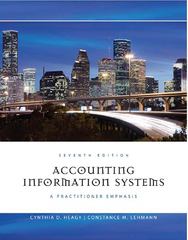Question
I'm trying to answer the following question. I've put my math below, so I need to know if it's correct - specifically, when/where to implement
I'm trying to answer the following question. I've put my math below, so I need to know if it's correct - specifically, when/where to implement inflation.
Question:
A recent college graduate has taken a new job at Work LLC, and since the company does not offer a traditional pension plan, she plans to take advantage of a tax-free investment account backed by a reputable financial institution that offers a guaranteed 8% annual return for as long as she lives.
The graduate plans on working for 45 years before retiring and will save a fixed amount each year until retirement, starting at the end of this year and continuing for all 45 years of work. Once she is retired, she expects to be able to live on the equivalent of $30,000/year in todays terms in addition to expected social security payments. She expects annual inflation to be 4% per year over her life.
She doesnt know how long she will live, but knows that with medical advancements, it could be for a very long time. Since one of her great fears is that she will outlive her savings, she plans to arrange retirement funding that will be in place if she were to live forever with the understanding that her heirs will inherit the remainder when she dies.
If she wants to save a fixed amount each year, starting with one year from now until her 45th work anniversary, how much does she need to save each year?
My answer:
First, determine how much she'll need in the future to get $30,000 a year. We know that she gets 8% interest, minus 4% inflation, for a total of 4% gain per year (Q1: is it correct to subtract inflation at this stage?) Thus, we need to ask: 4% of what principle will yield $30,000 each year? 4% of X = $30,000; X=$750,000. She needs to have $750,000 in the bank when she retires.
Second, we need to know how much money she needs to put into the account, over 45 years, to hit the $750,000 mark. To determine that, I use Excel's PMT function, which takes in:
=PMT(Rate, Number of Periods, Present Value, Future Value).
For Rate, I used 8% because that's the interest rate (Q2: Should I be subtracting inflation again at this stage?). For Number of Periods, I used 45 (because it's once per year for 45 years). For Present Value, I used 0 because the account begins empty. For Future Value, I used $750,000, because that's what I determined above would be the amount she needed.
=PMT(0.08,45,0,750000) = $1940.46 (Q3: Is this the correct answer?)
Step by Step Solution
There are 3 Steps involved in it
Step: 1

Get Instant Access to Expert-Tailored Solutions
See step-by-step solutions with expert insights and AI powered tools for academic success
Step: 2

Step: 3

Ace Your Homework with AI
Get the answers you need in no time with our AI-driven, step-by-step assistance
Get Started


